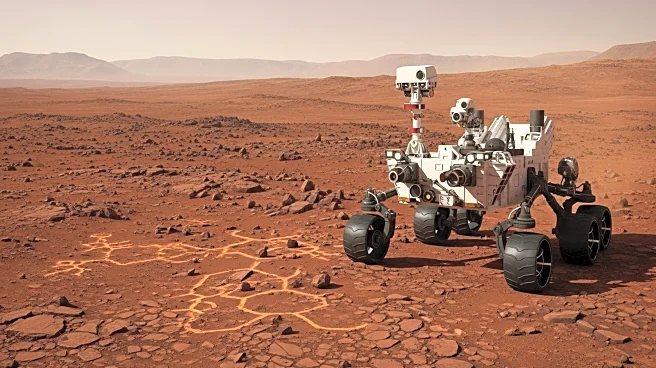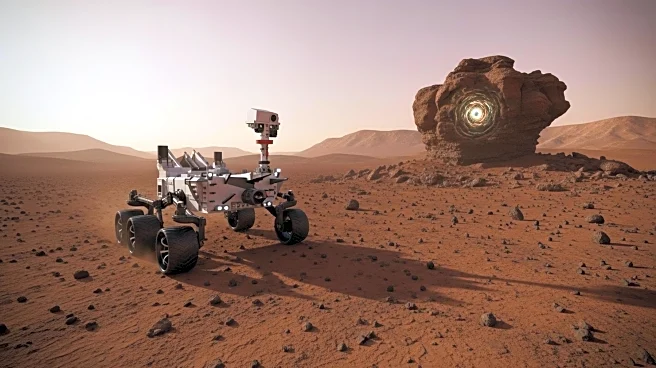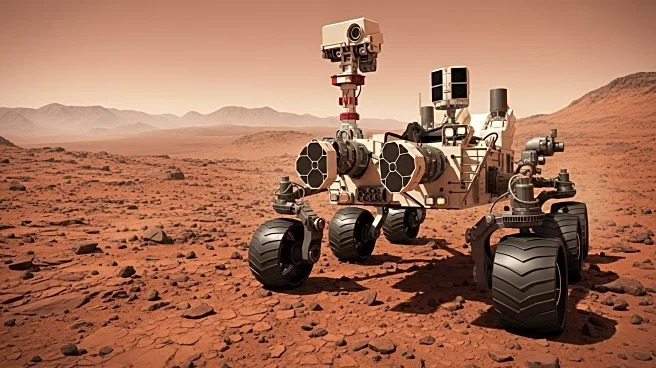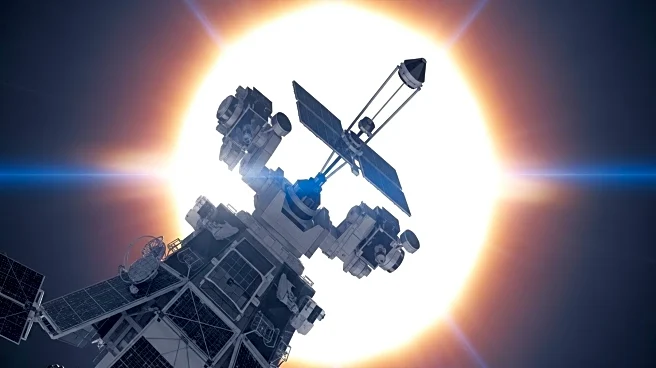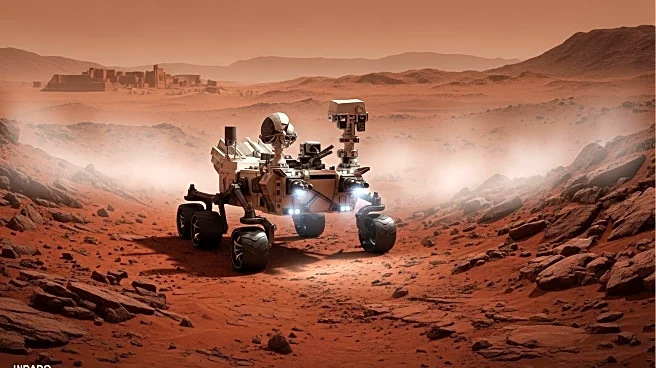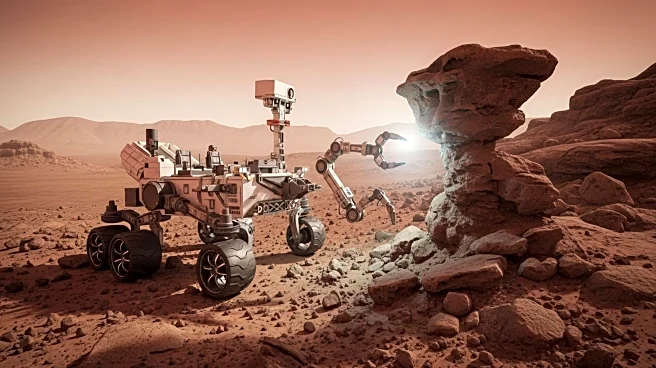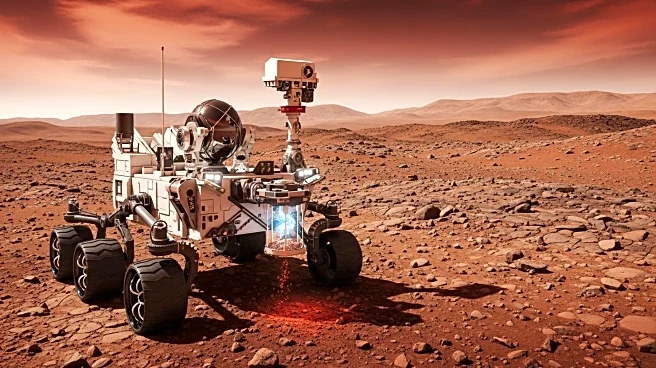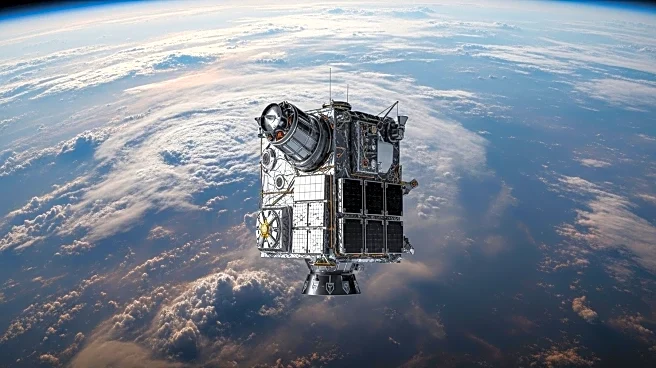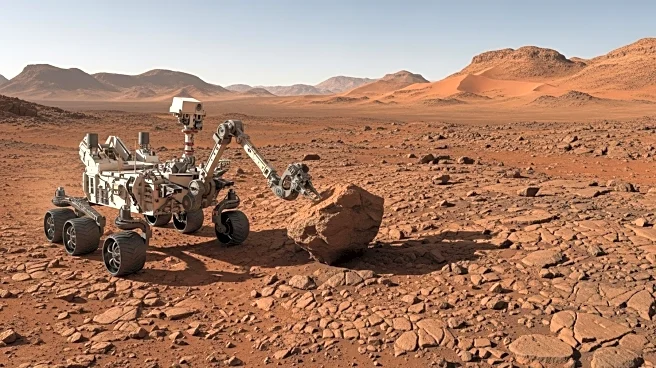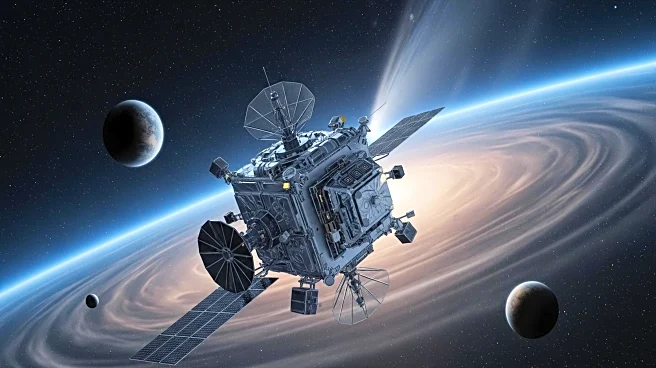What's Happening?
In 1976, NASA's Viking missions marked a significant milestone in space exploration by successfully landing two spacecraft on Mars. These missions, consisting of twin orbiters and landers, were equipped with experimental chambers designed to conduct biology experiments aimed at detecting life on the Martian surface. The Viking missions provided groundbreaking insights into Mars' atmosphere, surface, and planetary history. Despite the passage of time, the results of these experiments continue to be a topic of scientific discussion and analysis. The Viking landers conducted three biology experiments, each involving soil samples exposed to different nutrients under varied atmospheric conditions. While one experiment suggested a potential biological source, the others indicated nonbiological chemical reactions. The missions also included a molecular analysis experiment that surprisingly found no organic compounds on Mars, a result later attributed to the presence of perchlorate in the soil.
Why It's Important?
The Viking missions represent a pivotal moment in the search for extraterrestrial life, challenging scientists to reconsider the conditions necessary for life beyond Earth. The findings have influenced subsequent Mars exploration missions and continue to inform scientific models of potential life on Mars. The discovery of perchlorate in Martian soil has reshaped understanding of the planet's chemical environment, suggesting that organic materials may be rapidly converted to carbon dioxide, thus evading detection. This has implications for future missions aiming to uncover signs of life. The ongoing debate and research inspired by the Viking missions underscore the complexity of astrobiology and the need for advanced technologies to explore planetary environments. The missions have also contributed to the broader understanding of Mars' atmospheric dynamics and seasonal variations, which are crucial for planning future human exploration.
What's Next?
Future Mars missions are expected to build on the Viking findings, employing more sophisticated instruments to detect signs of life and organic compounds. Scientists continue to develop models, such as the one proposed by Steven A. Benner, which suggest the possibility of present-day microorganisms on Mars. These models will guide the design of experiments and technologies for upcoming missions. NASA and other space agencies are likely to prioritize the search for life in their Mars exploration agendas, with plans for both robotic and human missions. The insights gained from the Viking missions will play a critical role in shaping these efforts, as researchers aim to resolve the lingering questions about life on Mars.
Beyond the Headlines
The Viking missions have sparked ethical and philosophical discussions about the implications of discovering extraterrestrial life. Such a discovery would challenge existing paradigms in science and human thought, potentially altering perceptions of life and our place in the universe. The missions also highlight the importance of international collaboration in space exploration, as the quest to understand Mars involves scientists and researchers from around the world. The legacy of the Viking missions continues to inspire new generations of scientists and engineers, emphasizing the enduring impact of pioneering space exploration efforts.

